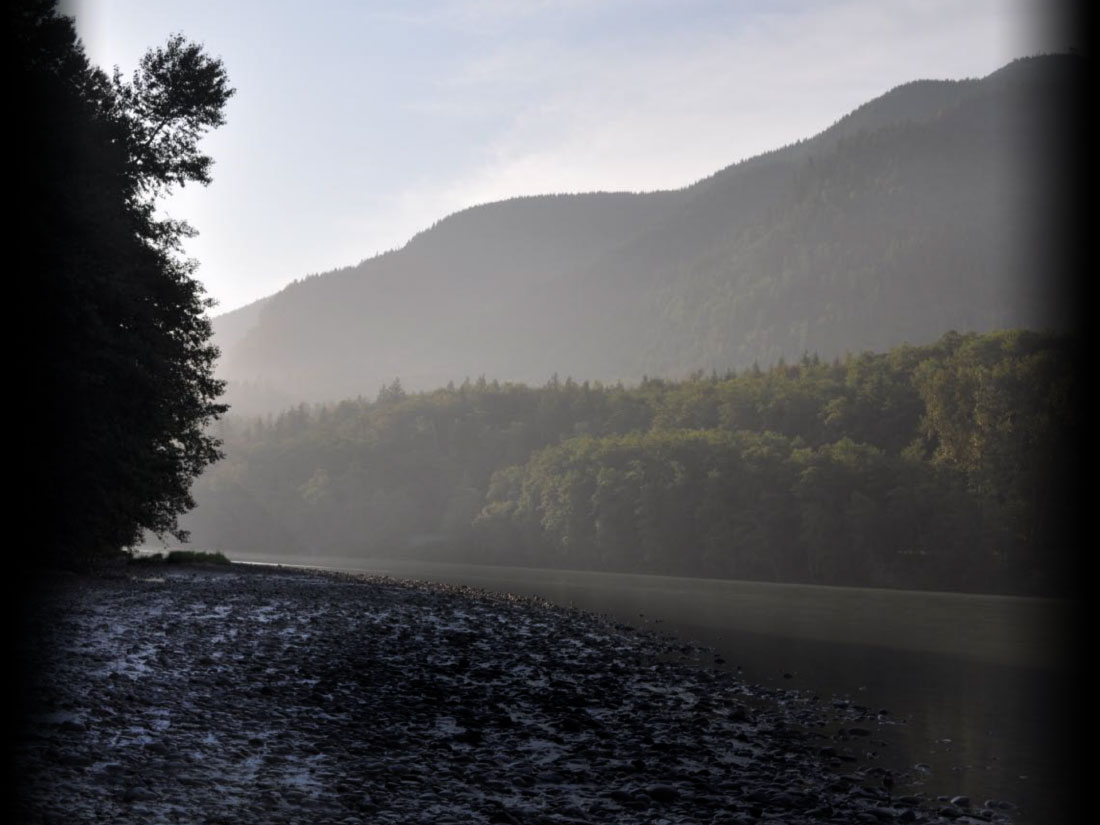Wow, the Skagit River’s natural salmon and trout resources are one of a kind! This wild place produces a huge part of all of Puget Sound’s native fish, including 60% of it’s wild Chinook Salmon. It’s the only river in Puget Sound that produces substantial runs of all of our native salmon and trout species, and it’s one of the main bull trout strongholds in the entire United States!
Many folks know that it is world famous for steelhead fishing, but not many know that hundreds of thousands of pounds of steelhead were harvested every year back in the early 1900’s. That’s huge, almost hard to imagine what that was like!
While we don’t have great historical records, we do know a lot more these days. For the last 40 years, state and tribal governments have done a good job counting fish on their spawning grounds, and that “escapement” estimate tracks the health of the population. We also have a good idea of where fish spawn and where their young rear or grow, which helps us create maps of their distribution.
Future features here will explore why we see fish populations fluctuating up and down. Tell us what you would like to know about Skagit’s native fish!
Click the fish and explore each species’ health and location in more detail!
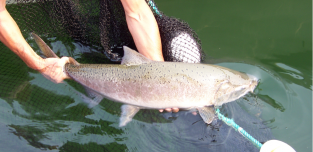
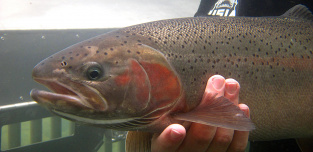
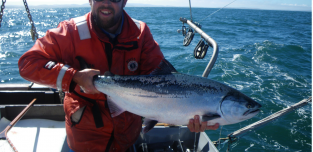
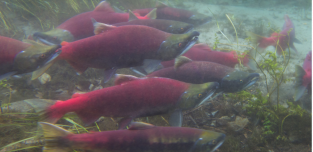
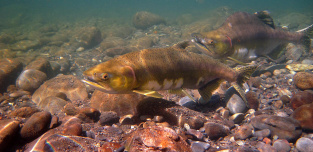
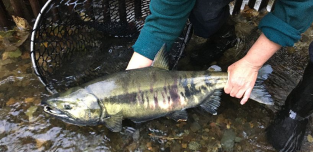
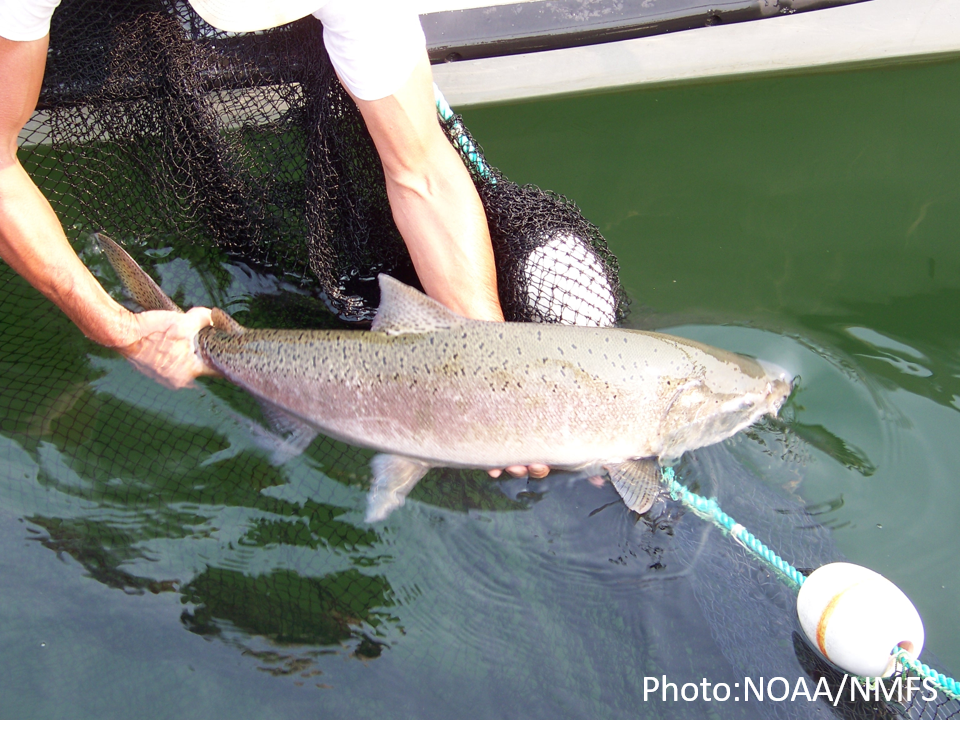
Chinook salmon mostly spawn in large mainstem channels, building nests or redds from State Route 9 all the way up to Newhalem and Darrington, as well as a few of the larger tributaries like Finney Creek. Mostly these fish spawn in September to October and are called summer or fall populations. Some Chinook salmon spawn in smaller tributaries high up in the watershed in the Cascade, Suiattle and Upper Sauk Rivers. They are called spring populations. Chinook can no longer access the Baker River because of the Baker River dams. Their young rely heavily on the estuary and lower and middle Skagit floodplain channels for rearing habitat, which has been lost more than upriver rearing habitats. Most out-migrate in spring at a very young age, though some stream-type fish stay in the freshwater for a year or more!
While we know the Chinook or king salmon run is far smaller than it used to be, requiring their listing as threatened under the Endangered Species Act, they are actually holding their own in the last 40 years as shown in this graph. Springers may even be increasing a little, but there just isn’t much data on them yet. Will larger floods and limited rearing habitat reduce their numbers as the climate changes?
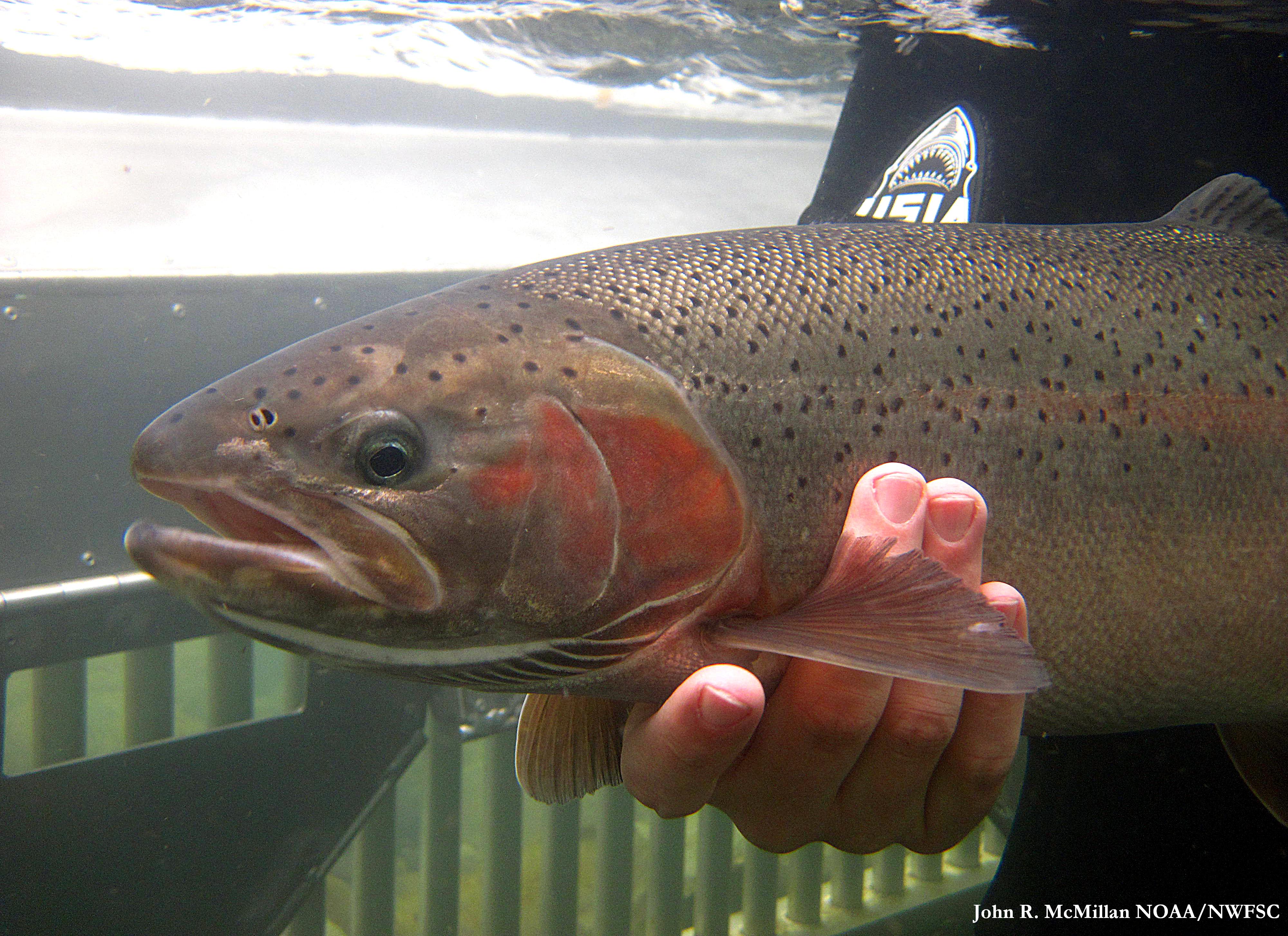
Steelhead are saltwater bound rainbow trout. Since they are anadromous, you won’t find them above any waterfalls. Otherwise, they are ubiquitous and can be found pretty much everywhere else they can get. Most spawn in the same areas or slightly higher than Chinook salmon, in the mainstems and larger tributaries. They used to spawn more successfully in tributaries than they do today, but tributary habitat is more degraded so we see less fish there. Juvenile steelhead are better at handling high velocity currents, often sticking around freshwater streams for years before out-migrating.
Like most of our fish, steelhead escapement in the last 40 years is far lower than historical numbers. In the late 1980’s and 1990’s we saw a shift downward in escapement, which when combined with even worse declines in other parts of Puget Sound resulted in a threatened listing under the Endangered Species Act. Numbers of spawning fish have started back up in the last few years; let’s keep our fingers crossed they keep going up!
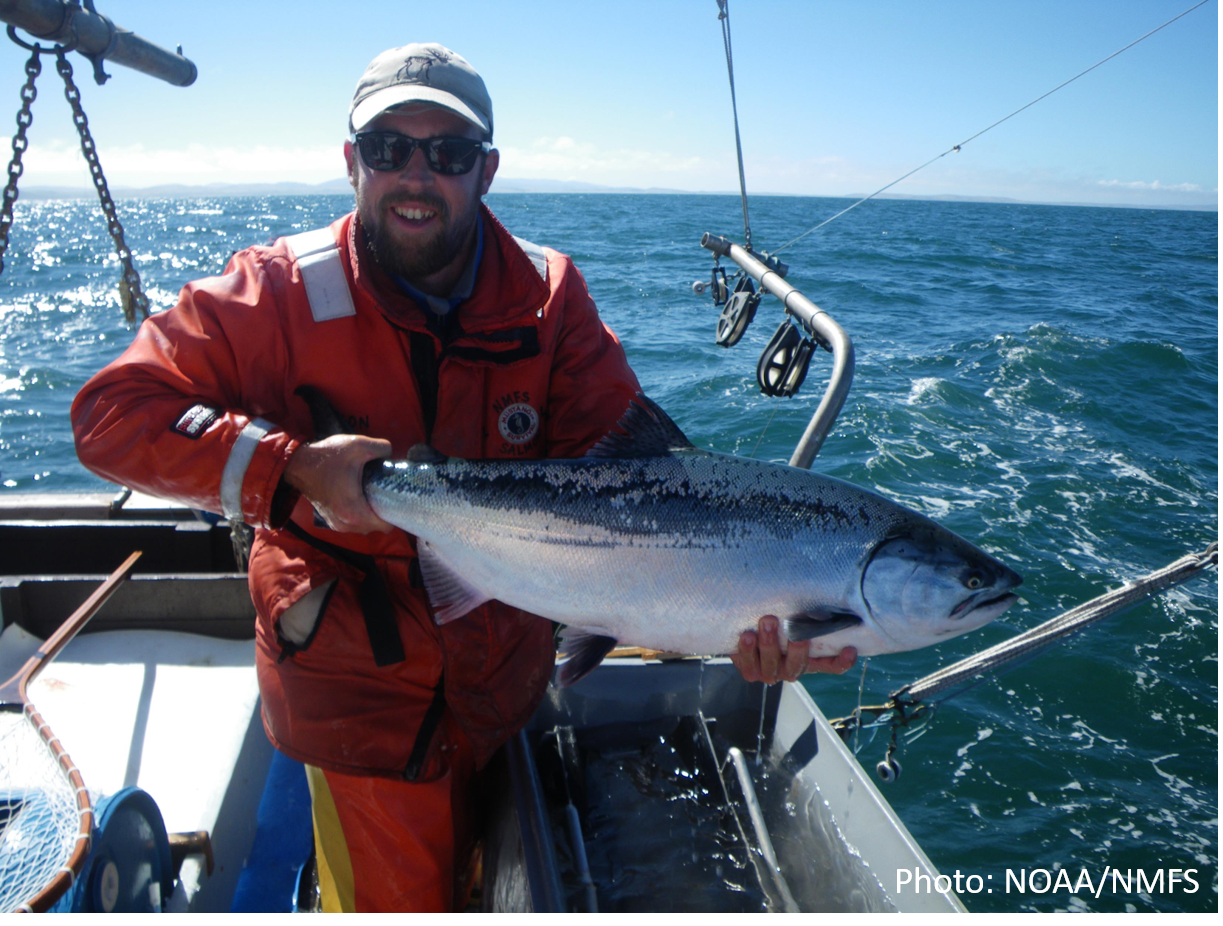
Coho or silver salmon love smaller channels higher in the watershed for spawning. Like steelhead they are widespread below migratory barriers that block their way. Their young are often found in pools, side-channels, and sloughs, preferring to stay in freshwater longer than most other salmon. Their spawn timing is later in the fall. The Samish River produces a relatively large number of coho salmon each year.
Coho health has been great in the Skagit for many years, particularly relative to other Puget Sound rivers. However, we have seen a significant drop-off in returning coho salmon adults in the last three years. We think this is due to poor freshwater habitat conditions recently as well as poor ocean growth and survival. Will those conditions return to normal in the next few years?
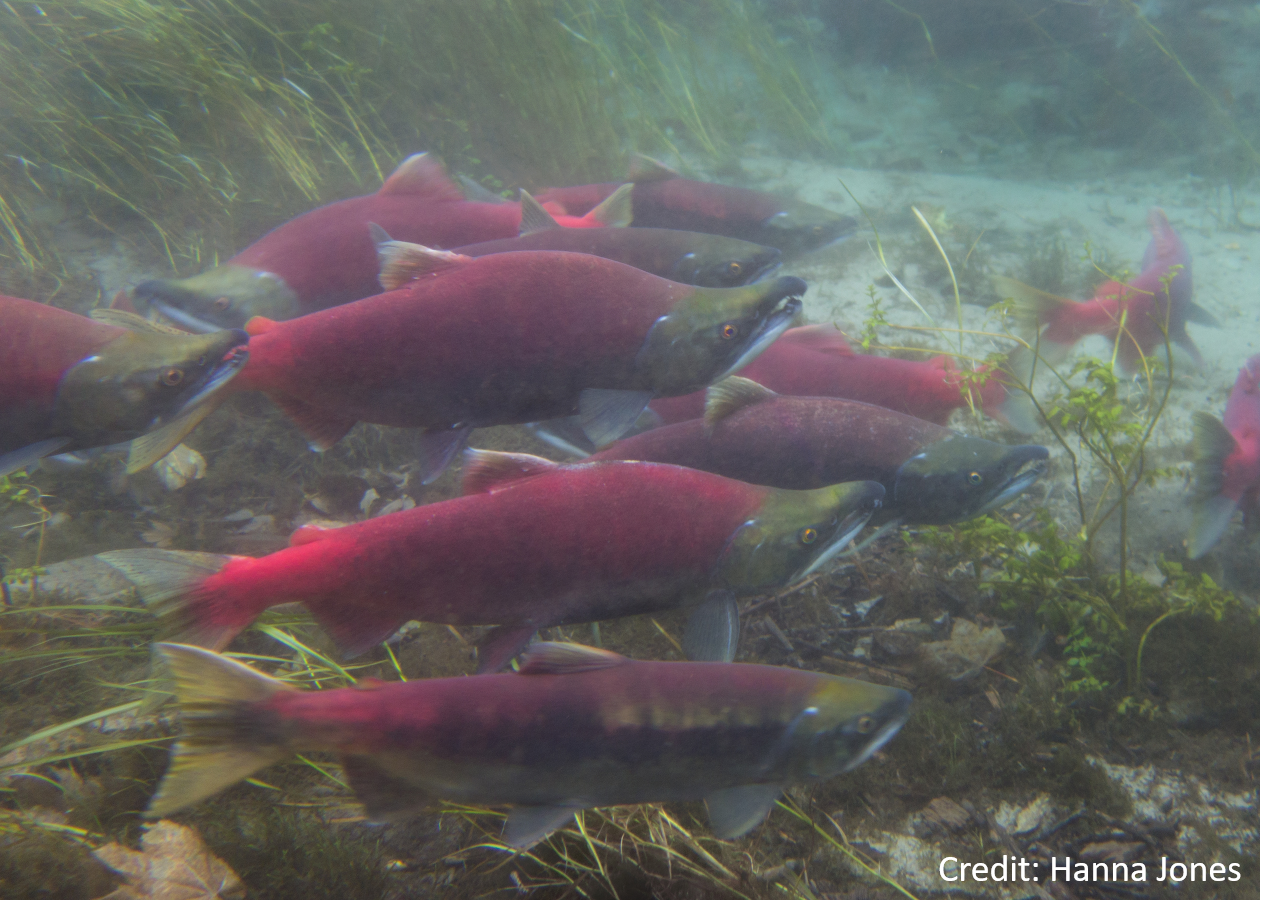
Sockeye or red salmon almost always spawn in river systems with large lakes. The juvenile fish often rear in lakes over winter where they feed and grow before daring the open ocean. In this area the place to be if you are a sockeye is Baker Lake. Construction of dams in 1925 and 1959 limited their access to the smaller, original lake, so hatchery and trapping facilities were built to raise and transport them. Interestingly, biologists have documented some unique river spawners in the Sauk and upper Skagit Rivers.
While sockeye numbers were very low in the 1970’s and 1980’s, better hydropower operations of fish facilities more recently have helped provide for a significant increase in their numbers escaping to spawn. Much more information can be found at the state fish and wildlife website.
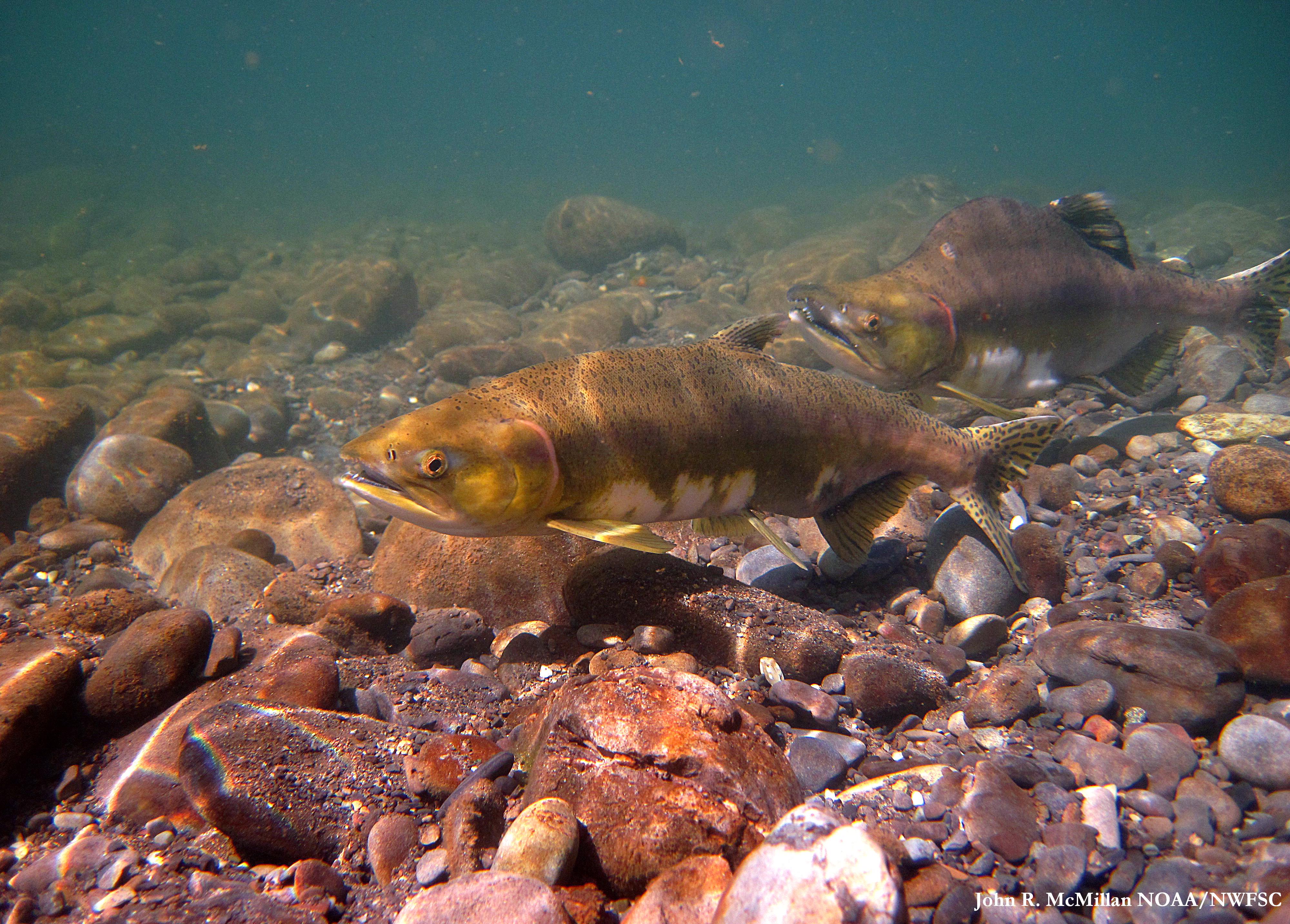
Pink or humpy salmon spawn in high densities, relatively lower in the watershed, mostly in the larger river channels. The map is very simple compared to other species! Pink salmon in the Skagit spawn every other year during the odd years like 2015. If their eggs survive the floods each year, the young fry or baby fish that emerge from the gravels spend very little time before out-migrating to Skagit Bay and beyond.
There is a clear, increasing trend in the health of Skagit River pink salmon, as indicated by the chart of escapement numbers for the last 50 years. Much less is known about why this trend is occurring than even some of the other species. How many pink salmon can this mighty river support? What was it like in the old days?
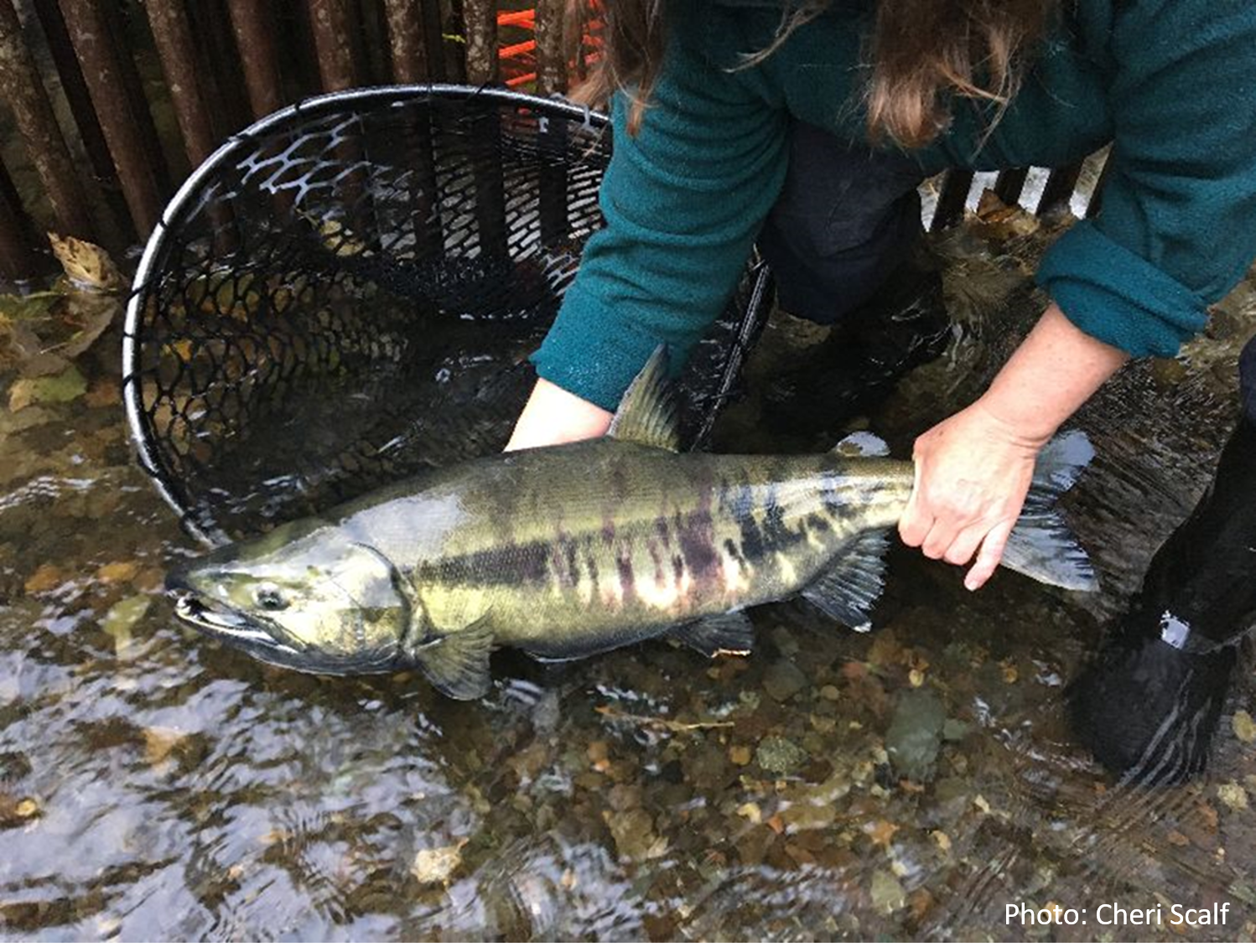
Chum or dog salmon are very common in lower river channels and medium sized tributaries in the Skagit Watershed. They prefer these lower gradient systems closer to the saltwater.
The health of chum salmon in the Skagit River is less clear. The big picture is that there is a significantly decreasing trend in their populations in the Skagit River in the last few decades. They have some consistency with a base number of spawners, but historically they have also had occasional years with very high survival and thus run size. However, that pattern of peaks has been lost in the last 10 years or so. Is their success being affected by the record numbers of pink salmon starting to come back recently?
